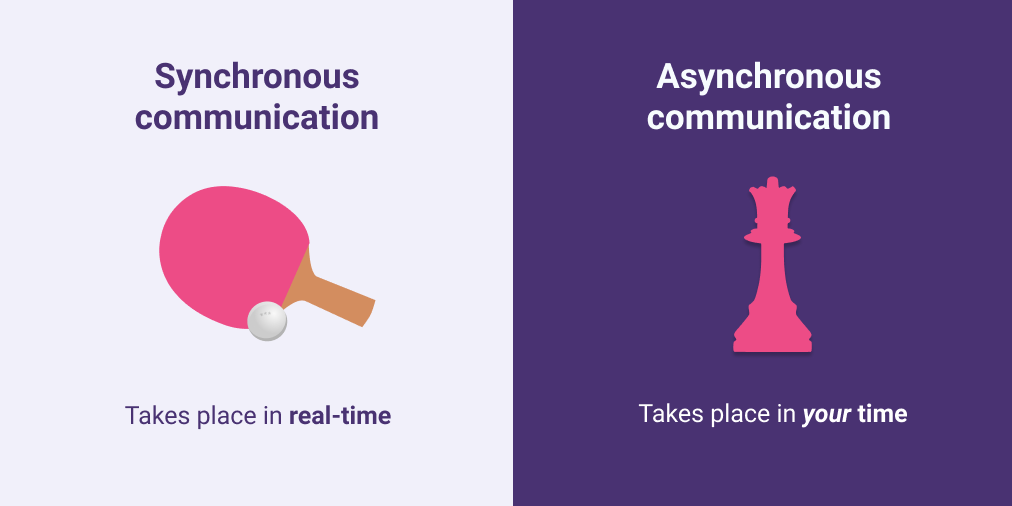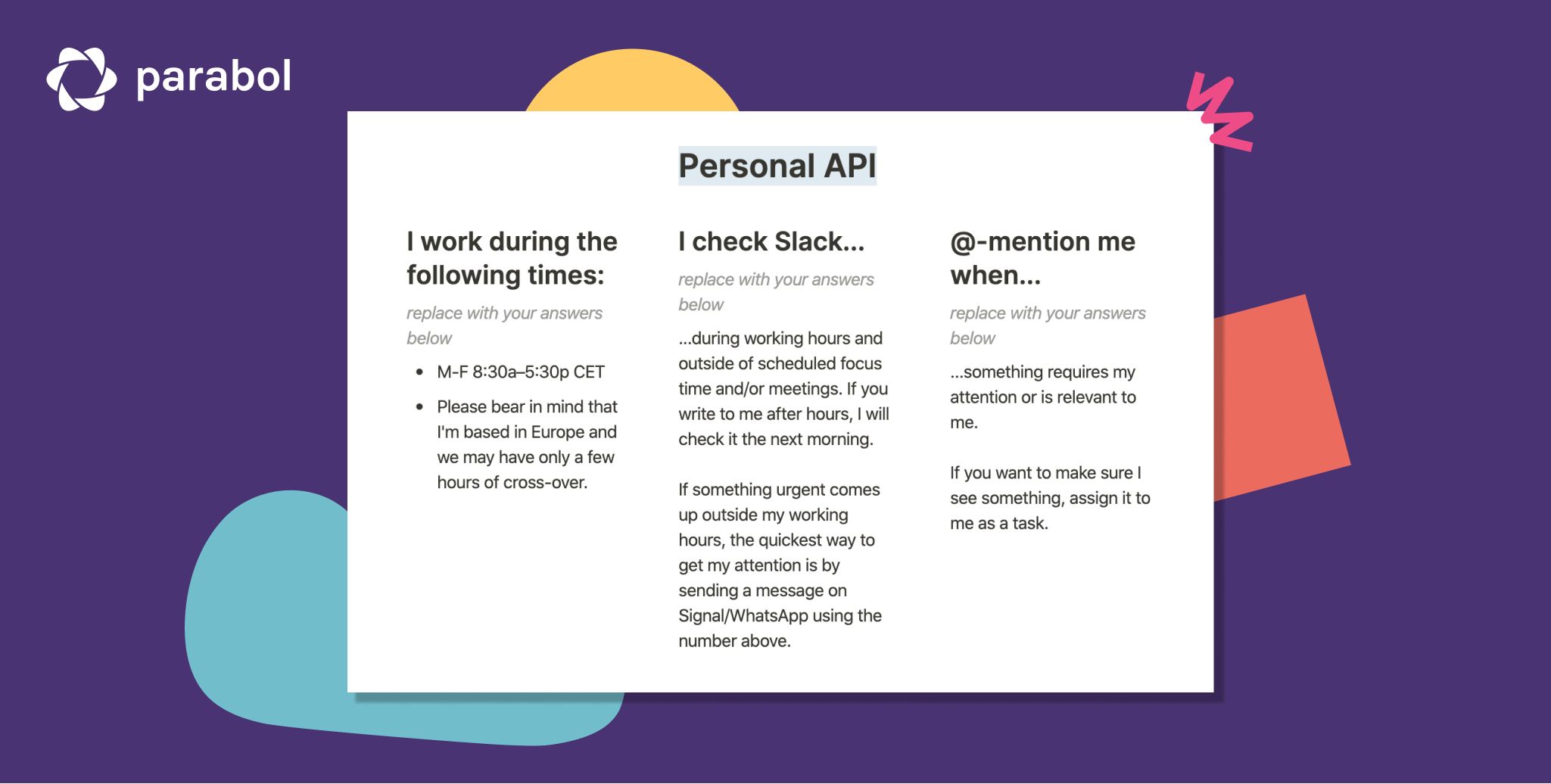How Scrum Masters Can Solve Remote Work Challenges

Scrum Masters have to wear many different hats in their day to day work 🎩
Not only are they agile gurus, instilling Scrum values and processes in their teams – they must also be teachers, mentors, planners, organizers, people managers, leaders and sometimes even peacekeepers.
And because the Scrum Master’s role depends a lot on having great soft skills, it’s really important for them to get up close and personal with the teams they are managing.
Now, that’s always been easy enough when working in an office together.
But what about when your team members are all working from home, or distributed across the world?
How can you be a great Scrum Master and bring that same energy to your role without face to face contact?
Being an effective Scrum Master for a remote team requires more than just taking your regular work onto a video call.
Because remote teams require remote-friendly solutions.
That’s why, in this blog we’re going to solve the top 3 challenges Scrum Masters face when working with remote teams and offer sustainable solutions to help you improve communication, motivation and transparency.
1. Scrum Team Communication
🚧 Problem: Everyone’s working at home or in different time zones. We can’t talk face to face or have our usual office chats. How can I make sure the team communicate well?
✅ Solution: Build a culture of async communication
Discussions about remote work tend to focus on the change in your workspace. But there may also be a change in how the team works. When you’re not in a shared office, team members will take breaks at slightly different times, may shift their hours a bit, and may have other distractions and challenges at home that mean they’re available at somewhat different hours.
The challenge is even greater if your remote team is spread across time zones. When some of your team are ending their workday just as you wake up – or everyone is working from home – it can be tough to find a time to get together and talk.
As a Scrum Master, you may start to feel like you’re suddenly not there to unblock team members as soon as they need it.
Yet many successful remote companies report that they work faster and with greater flexibility.
That’s because they’ve built a culture of async communication.
Asynchronous communication is simply:
“When you send a written, video or audio message without the expectation of an immediate response.”
No doubt you’ve done it many times before without realising it – sending a text message or an email are examples of async communications that everyone is familiar with!
But it’s been a secret superpower of remote teams for years.

You can use async methods to communicate during the workday all the way through to how you run your daily standups or retrospectives.
Why using async communication is important for remote Scrum Masters
If your devs are in the habit of complaining about too many meetings or distractions, then async cultures help to protect them from just that.
Without the expectation that team members will respond immediately to questions or ‘jump on a quick call’ to resolve issues, your devs can have more autonomy and maximise their time for ‘deep work’.
A study by the University of California Irvine found that after experiencing a distraction, it takes an average of 23 minutes and 15 seconds to maintain full focus again.
Just three distractions a day can lead to over an hour of wasted time!

For Scrum Masters, asynchronous communication also helps the team gradually build a culture of documentation, as problems and solutions are documented in text or video.
Over time, as more issues are solved and team members are unblocked you passively build up a library of solution explanations for problems that may crop up again and again. And those resources come in really handy when you have a new team member on board who doesn’t know the code base so well.
Async communication helps your team maintain their focus and document their work at the same time. In case you’re worried that it leads to team members being blocked for hours on end without an immediate response, encourage your team to document their problems in a public Slack or MS Teams channel or create rules for flagging urgent issues (by using an @-mention function, for example, or resorting to sync communications).
How to create an async culture for your agile team
- ⏰ Expose your working hours. Clear communication helps folks to know when you will be available. Consider also asking your team members to create what we like to call “Personal APIs” or “How to work with me” documents showing their working hours, communication preferences, and when they typically respond to email or messages.

- Create videos to explain complex issues. Instead of disrupting your team’s focus time with another video call, try recording an ‘async video’ using a tool like Loom. You can effectively unblock your colleagues by explaining solutions and give your team members the opportunity to consume that media when they have a break or in a time zone that suits them. This also helps you to build a culture of documentation. If a similar issue comes up in the future, you have a handy video you can already send to someone!
Here’s an example of an async video we made to explain a complex issue. This video has now become part of our company documentation.
- ⚒️ Embrace a new toolset. Tools such as Slack, MS Teams, Loom and Notion are great for async work. Slack and MS Teams let you communicate ad hoc during the day – leaving a message for a coworker and letting them respond as they need. Loom and Notion are great for keeping all of your documentation, leaving a record you can come back to days, weeks or months later. There are even specific tools for ‘async-ifying’ retrospectives and standups. And when you’re remote, your tasking tool is your best friend for async comms. Encourage your team to put items in the ‘Stuck’ column of your tasking system or Kanban board if they need help. Your team’s Stuck column can act as a loose to-do list for the remote Scrum Master.

Async communication might seem like a big shift when you’re starting out. After all, it’s much easier to tap someone on the shoulder and get a quick answer to a question.
But at what cost?
High performing teams need time to focus and async communication gives them that precious time.
2. Transparency and Accountability
🚧 Problem: We are losing shared context while remote and lack the ad-hoc interactions that help us bond and learn together
✅ Solution: Create transparency in your communication and build clear systems of accountability
When you’re all in the office rubbing shoulders, heading to grab a quick lunch together or huddled around a monitor solving a problem, you receive a lot more passive signals about what folks are doing and how work is going.
When the team isn’t sharing the same space, those signals can get much quieter.
You need to find another way of having transparency and building a co-owned system of accountability for the team. Instead of relying on passive signals and information collection, Scrum Masters need to make it easy and natural for the team to share what they’re up to.
Why transparency is critical for remote teams
During the Daily Scrum, or Daily Standup, team members have an opportunity to share what they want to achieve during the day and what potential roadblocks they can foresee. As a Scrum Master that gives you a quick sense of where everyone is at with their tasks and what potential issues might come up during the day.
Increased transparency helps teams to feel they are part of a high-performing unit. It gives team members a direct sense of what everyone contributes to the team, and encourages team members to help each other out.
If Magdalena doesn’t even know what Daria is working on, how can they help each other out?
Connecting to each other’s work helps build stronger and more resilient teams.
But as a Scrum Master how do you make that happen?
As the great George R. R. Martin wrote: “words are wind” – so you might need more than just a 15-minute daily standup to meaningfully improve transparency.
Here are a few tips and tricks.
How to help your scrum team embrace transparency
- 📝 Expose Sprint Planning to the whole team: Sometimes it’s just not practical to have the whole team attending the Sprint Planning meeting. But as a Scrum Master, you’re sure to be part of that meeting. At the end of Sprint Planning – even if your whole team attends – do a quick overview at the end of your meeting or asynchronously so everyone gets a sense of exactly what you are trying to achieve this sprint and who is taking on which tasks. Having that context at the start of the Sprint enhances transparency and ensures group buy-in for items on the sprint backlog.

- 📣 Communicate in public channels. Encourage your team members to write messages or questions in public channels rather than as private 1-1 messages. As a Scrum Master you can’t always be on hand immediately to help. But your team can flag that they need some help in public channels. When messages are public, it’s possible that your other team members can jump in and help each other because someone else might be able to solve a problem or answer a question. It also helps everyone else passively learn the solution to problems. Writing up questions in your workspace, MS Teams or a Slack channel creates an opportunity to help build knowledge for the whole team, and might just help team members get unblocked more quickly.

- ✅ Instill respect for your tasking system: We all have some kind of tasking system and it’s often the ultimate source of truth and knowledge for teams. Whether you use Jira, Rally, Trello or Parabol, it’s even more important that tasks are updated when you’re remote. As a Scrum Master, your job becomes a lot easier if your team is actively updating the task board to always reflect the latest state of events. Think about what kind of tasking system and workflow suits your teams best for remote work. Scrum Masters can instill respect for the tasking system by making sure that it is useful for the team. And if you can see that it isn’t being used, bring that topic into the retrospective and talk about your toolset. Your tools are essentially your new remote office, so it’s important to get them right.
- 💁 Expose your work to each other. Some Scrum practitioners love the idea of exposing the burn-down chart, where the team can see how much has been completed towards their goals during a sprint. But that chart can feel rather abstract. We take a different approach by encouraging team members to do a quick async roundup of what they achieved in the week for the rest of the team – a bit like a mini Sprint Demo. It only has to be a few lines, but it helps the team chart their journey together and improve transparency. We call this process our ‘Friday Ship’ and we make it into a weekly blog for Parabol stakeholders to check what’s going on inside the company. If you give this idea a go with your team, make sure you (as Scrum Master) also contribute what you got up to in the week. That helps set an expectation for other team members.

3. Connection and Motivation
🚧 Problem: It’s more difficult for me to motivate the team and maintain the same level of connection.
✅Solution: Be intentional about building empathy for one another and celebrating success.
Scrum Masters may find their remote teams becoming… well, a bit remote.
If you’re all working from home it can be difficult to keep up strong team bonds without being very intentional about it. And if you’re a distributed team, there may also be cultural differences and timezones to contend with.
To keep remote teams functioning as a unit, Scrum Masters have some additional work on their hands. And while most Scrum Masters have their toolbox of different games and activities, you might have to think about how to make those work in a remote context.
It’s more difficult to passively build connection and motivation, so you need to be intentional about how you do this. And you might need special tools or activities to help.
Why building rapport on a remote team matters
When teams communicate remotely, there’s a lot we could miss out on. As humans, we have evolved to analyse all ranges of human expression – from body language, group dynamics, and even the most minor of facial expressions.
And yet when we’re working remotely, most of our collaboration experience is via text-based chat or on the odd video call.
It’s no wonder that we can become distant from our colleagues.
But making a concerted effort to up your empathy and build rapport is important because, like all things remote, we need to be intentional about communicating, giving feedback, and motivating each other. Teams that have strong bonds of empathy tend to be more resilient, more helpful to each other, and they generally make work a nicer place to be.
As a Scrum Master part of your role is being that empathetic character. You need to understand your team’s needs and make sure everyone is feeling great about their work. So let’s look at some tips to help do that remotely.
How to create empathy as a remote scrum master
- 🧊Have fun with icebreaker questions. If you’re anything like us, during the Sprint your team have their heads down and are pushing forward to complete their tasks before the sprint deadline. So when you do have that sync time to chat on a video call – try using an icebreaker to connect as humans before you get into your work. Icebreakers help to get everyone contributing in the meeting and they help you intentionally build connection with each other. Icebreakers also help you to build stronger networked relationships between team members as they discover mutual interests or start spin-off conversations.
- 🤝 Use 1:1s to build connection. Scrum Masters may or may not hold 1:1 meetings with their team members. But if you do, split your time up into explicitly work-related topics and more general ‘get to know you’ sections. Folks often mention loneliness and inability to connect as struggles with remote work – so check in emotionally, too. In my 1:1s we add a “getting to know you” question at the end of our session.
Here are some questions we’ve used:
– Do you have a pet? What’s he/she like? If not, would you have a pet, and what would it be?
– Do you like to cook? What’s your favorite thing to make or eat?
– What beverage do you start your morning with? What do you end your day with?
– What’s one of your favorite memories of the past year?
– If you could time travel, when and where would you go?
– If you were stuck on a desert island and could bring with you one book and one luxury, what would you choose?
– What’s made you smile recently?
– What was your first job? What learnings did you take away from it?
- 💌 Assume positive intent. One of the many roles the Scrum Masters plays is peacekeeper. Because any team composed of passionate, educated people with strong opinions has disagreements. When you’re working remotely, it can be really easy to lose sight of the person on the other side of the debate or take something personally. So to avoid some spicy situations, Scrum Masters can remind their team to ‘assume positive intent’. Just because something may have come across in a stern or unforgiving over chat, doesn’t mean it was meant that way. Being able to reflect on where the other person is coming from, and recognising that you’re pulling towards the same goal can help Scrum Masters mitigate conflicts and prevent some of them cropping up. You might forge the idea of assuming positive intent in your Scrum team values. Otherwise, in the midst of any disagreement the Scrum Master can jump in and remind the warring parties of their mutual interests and de-escalate the situation by re-framing the perspectives of both sides.
- 🔋 Energy Levels retrospectives. Working in sprints can be pretty intense, especially if your work is geared towards fixed business deadlines. So it’s worth every now and then checking in on your team’s energy level. You can do this in your retrospective using a specific template that asks: what’s giving you energy, what’s taking energy away, and how is your energy level going into the next sprint. If you can see that energy levels across the board are low, you can address that. But this method also gives you the opportunity to keep your team motivated by switching peoples’ assigned tasks. If John says he hates doing the code review and Anya says she finds them interesting, there could be a mutual benefit in swapping tasks, which keeps everyone happy.

- 🏆 Winning Streak retrospectives. So often our retrospectives put a big emphasis on what can be improved. But sometimes it’s worth just taking a moment to bask in your success and let your team feel the satisfaction of a job well done. So if you’ve just shipped a big feature and it’s gone really well, try running a winning streak retro with your team. This helps you create a safe space for folks to give kudos to each other, but also encourages the team to think about what made the last sprint so good and how you can replicate your successes in future.
Conclusion
Once upon a time, it was unthinkable that a Scrum Master could do their job remotely – without their trusty box of stationery and the team around them.
But as the world embraces remote work more and more, there’s an opportunity for remote Scrum Masters to reshape and redefine their roles.
If you’re an existing Scrum Master adapting to remote, or thinking about becoming a Scrum Master, we hope these three remote strategies give some food for thought and help make your remote practice even better.
And if you’re considering becoming a Scrum Master, there are plenty of resources, including Scrum Master interview questions and Scrum Master interview Q&As we recommend to help you make that transition.
The key with all of the points discussed in this article is to be more intentional in your role as a Scrum Master.
Because without passive ways of building team context, remote Scrum Masters have to do a lot more work to build transparency, empathy, and async ways of working.
But that hard work will pay off – letting you and your team enjoy the benefits of remote work, while continuing to shipping awesome products and features.








